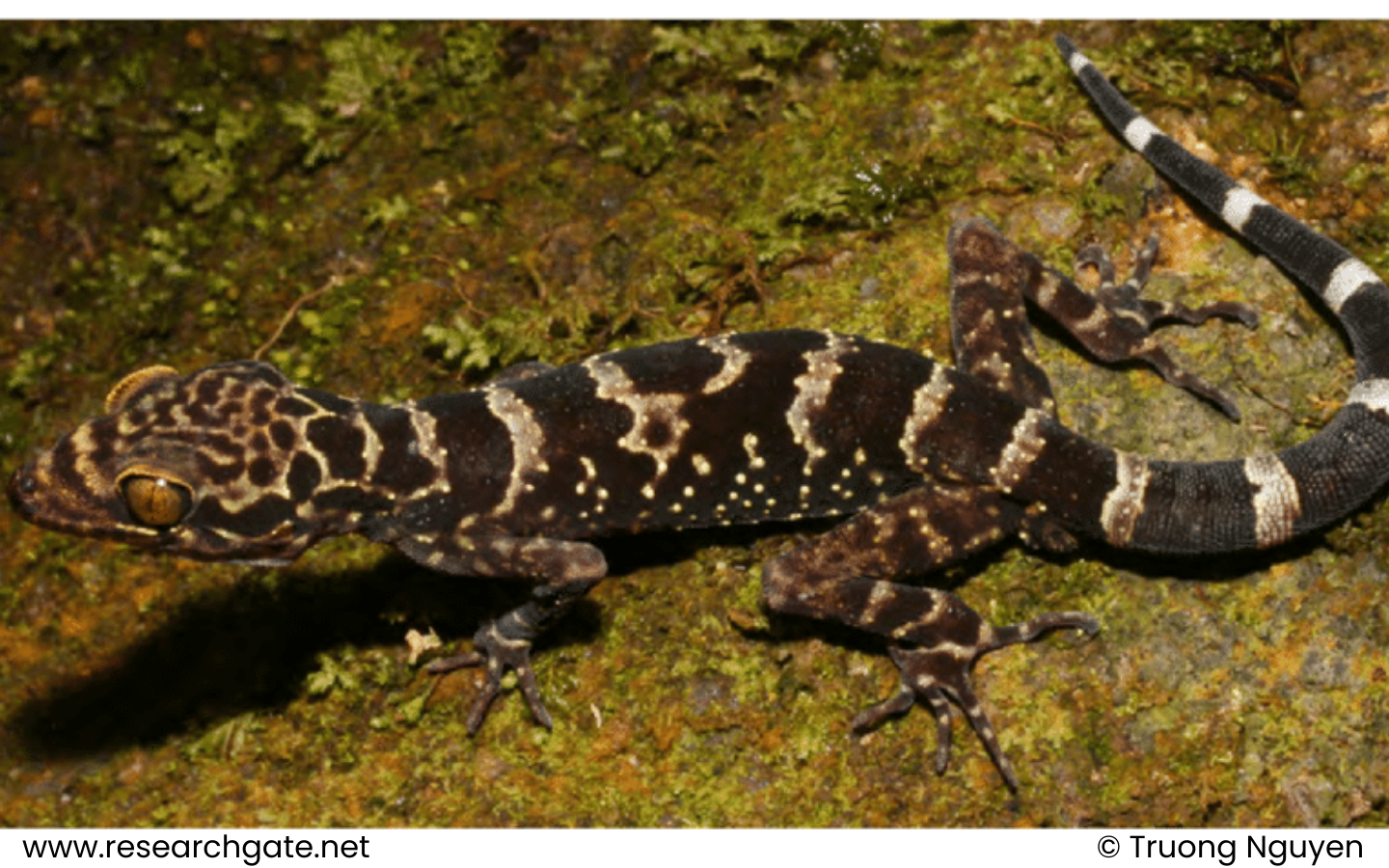
Science name: Cyrtodactylus phuocbinhensis – Nguyen, Le, Tran, Orlov, Lathrop, Macculloch, Le, Jin, Nguyen, Nguyen, Hoang, Che, Murphy & Zhang, 2013
Taxonomic: Animalia>> Chordata>> Reptilia>> Squamata >> Gekkonidae >> phuocbinhensis
Species status: Endemic ; IUCN status: LC (Least Concern)
Description:
Physical characteristics: Cyrtodactylus phuocbinhensis is a medium-sized gecko with a snout-vent length (SVL) ranging from 46.0 to 60.4 mm. The tail is longer than the body. It has 9–11 upper labial scales and 9–10 lower labial scales. There are 43–47 transverse ventral scale rows at midbody, and the subcaudal scales are small, not transversely enlarged. Males have 7 preanal pores arranged in a V-shape, while females lack these pores.
Coloration and Appearance: The head is copper-brown with dark brown spots on the crown. The body features dark brown stripes or blotches along the dorsum, with an interrupted nuchal band extending to the eyes. The back is patterned with dark brown markings, while the ventral side is white or pale brown. The tail is marked with 10 black bands.
Distribution and habitat:
Elevation: Found at elevations between 646 and 1,136 meters above sea level.
Area: Cyrtodactylus phuocbinhensis is endemic to Vietnam, specifically recorded in Phước Bình National Park, Ninh Thuận Province.
Habitat: This species inhabits primary and secondary montane forest, where it has been recorded at night on rocks and trees along streams.
Behaviour and ecology:
Lifestyle: This gecko is nocturnal, actively foraging at night on rocks and trees along streams. During the day, it hides under rocks and in crevices.
Reproduction: Cyrtodactylus phuocbinhensis is oviparous, with females laying two eggs in rock crevices or under tree bark during the early rainy season. The sex of hatchlings is temperature-dependent.
Diet: It feeds on small insects found in its forested and rocky habitat.
Conservation and status:
IUCN Red List Category and Criteria: Listed as Least Concern due to its stable population and relatively wide distribution.
Threats: The main threats to this species are habitat loss and degradation due to deforestation and human activities, such as agricultural expansion in its montane forest habitat.
How to Identify the Greater Sand Plover, Tibetan Sand Plover and Siberian Sand Plover
Identification Differences within the Sand Plover Complex: The sand plover group, which was traditionally divided [...]
Highlights of Cat Tien National Park Reptiles and Amphibian Endemics
Spanning over 71,350 hectares of tropical forests, grasslands, and wetlands, Cat Tien National Park is [...]
Highlights of Cat Tien National Park Mammals in a World Biosphere Reserve
In addition to reptiles and birds, Cat Tien National Park is also rich in mammals, [...]
Kontum Plateau Endemic and Highlight bird
Kontum Plateau Endemic And Highlight Bird species like Chestnut-eared Laughingthrush and top birding routes while [...]
Dalat Plateau Endemic and highlight bird
The Dalat Plateau is a birdwatcher’s paradise, renowned for its exceptional biodiversity and unique highland [...]
Cat Tien National Park Endemic and Highlighted Birds
Covering 71,920 hectares in southern Vietnam, Cat Tien National Park is home to a number [...]